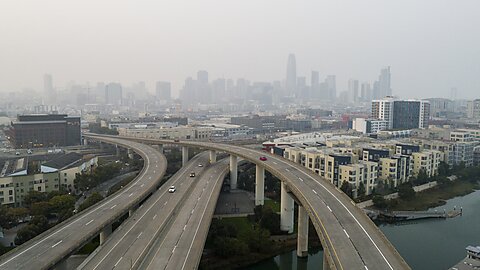David Kemp and Peter Van Doren
Environmental regulations are among the most significant components of the federal regulatory state. Between 2006 and 2016, the Environmental Protection Agency (EPA) accounted for 71 percent of the monetized benefits and 55 percent of the costs of all major federal regulations. Of those benefits, 95 percent came from air quality rules, primarily those targeting fine particulate matter (PM2.5), a regulatory category for microscopic airborne particles smaller than 2.5 micrometers in diameter.
Federal regulation of PM2.5 is based on the belief that long-term exposure increases the risk of mortality, including from heart and lung diseases. Under the Clean Air Act (CAA), the EPA must reassess permissible PM2.5 levels every five years, known as the National Ambient Air Quality Standard (NAAQS). In 2024, the Biden administration lowered the annual standard from 12 to 9 micrograms per cubic meter. The Trump administration has signaled its intent to revisit the new standard, and legislation has been introduced in Congress to overturn it.
These recent actions are the latest in a long political back-and-forth over the standards and reflect deeper problems with how PM2.5 is regulated. In our recent white paper, Rethinking Air Quality Regulation, we examine the scientific and economic foundations of PM2.5 standards and conclude that the NAAQS process overlooks key uncertainties and fails to account for economic tradeoffs.
The core issue is that the mortality risks of PM2.5 are based on observational studies that cannot definitively prove causality. Randomized controlled trials, the gold standard for demonstrating cause and effect, are not feasible in this context for logistical reasons. Instead, researchers rely on statistical methods that remain vulnerable to unobserved confounders, migration effects, and data limitations. Even recent studies, such as a 2020 analysis of Medicare data, face these challenges.
Despite these limitations, such studies continue to underpin federal standards. The EPA also assumes there is no safe threshold for PM2.5 exposure. This assumption is highly contested and may exaggerate the estimated benefits of regulation. In addition, the EPA treats PM2.5 as a uniform substance, even though it includes a wide range of particles with different levels of toxicity. For example, coal ash or diesel exhaust may be far more harmful than dust from unpaved roads, but current standards treat them all equally. This one-size-fits-all approach can result in overregulation in some areas and underregulation in others.
The costs and benefits of regulation are also unevenly distributed. Most of the health benefits are concentrated in a small number of urban counties, while some rural areas bear significant costs with less corresponding benefit. When scientific uncertainty and regional variation are included in the analysis, PM2.5 regulation may create negative net benefits in large parts of the country.
We argue that it’s time to reconsider the federal approach. First, Congress should revise the CAA to weigh costs and explicitly address scientific uncertainty when setting air quality standards. The EPA already implicitly considers costs. Otherwise, it would set the standard at zero, but doing so without transparency invites arbitrary decisions.
Second, the national PM2.5 standard should be eliminated, and regulatory authority for local air pollution should be devolved to the states. Federal oversight should focus on pollution that crosses state lines. Local officials are better positioned to assess regional needs and tradeoffs, and decentralizing authority could encourage more targeted, accountable, and innovative policymaking.
At a time when PM2.5 levels are already low and health risks remain uncertain, the current system is ill-suited to balance science, costs, and public priorities. Reforming the standards would promote more effective and economically sound environmental policy.
Cato Institute Intern Esther Ki contributed to the writing of this post.














